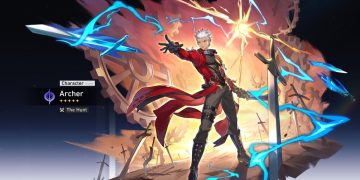Our deep dive into VR artistry, Inside XR Design, highlights the best techniques to capture immersive experiences. Today, we’re focusing on crafting an outstanding VR trailer using purely in-game footage. There’s no need for complex mixed reality gear or intricate video edits—just clever strategy and a tried-and-true approach. Stick with us until the end, where I’ll provide a checklist of essential technical tips to ensure your trailer dazzles, and we’ll also showcase a trailer that embodies everything we’re discussing.
If you prefer visual content, the full video is available below, or read on for a text adaptation.
Let’s establish why trailers are crucial in the first place.
Here’s the deal: it’s not your game alone that persuades others to try it. It’s your trailer. You might have developed the most phenomenal game ever, yet if it fails to convey its charm and allure, you might miss out on grabbing the audience’s attention. It’s vital to integrate marketing into the core of game development, rather than leaving it as an afterthought. You wouldn’t devote years to creating a game only to rush through the piece that potentially generates sales.
So how do you design a trailer that stands out, minus the intricate mixed reality elements? Let’s break it down into three simple lessons.
### The Hook
First up, let’s talk about the hook. This could very well be the most pivotal aspect of your trailer. The hook is what makes your game memorable—the feature that compels viewers to say, “I NEED to do that.”
Consider it the game’s unique signature. Whether it’s innovative combat, a standout art style, a novel weapon, or a distinctive mechanic others lack, it must be something special. Your game’s hook needs to pop, especially when lined up with other titles in the same genre. You should definitely be playing other games in your genre to see how yours differs. Without a hook, consumers won’t have a clear rationale for choosing your game over another similar one.
And a critical point to remember: For your trailer to have a hook, your game itself must possess one. If you can’t identify your game’s hook yet, that discovery is step one before thinking about trailer production.
Let’s illustrate this with a real-world example. Check out the trailer for the game Hellsweeper VR (2023) by Mixed Realms. Watch closely and see if you can pinpoint the hook.
Did you spot it? It’s the unique combat. Right from the outset, before any logos or text, viewers are treated to 10 seconds of engaging VR combat featuring intriguing weapons and powers. The action continues throughout, consistently highlighting the hook. The message is clear and strong: “Here’s why you want to play our game.”
### Show, Don’t Tell
This leads us to our next lesson: Show, don’t tell. Exceptional trailers don’t just speak about a game’s qualities. They illustrate them. In VR, this is especially vital—viewers need to witness the fun to envision themselves diving into the experience.
Boneworks (2019) by Stress Level Zero is a prime example of this principle. Let’s take a look:
The trailer expertly weaves together distinct, memorable moments, painting a vivid picture of the unique experiences awaiting players.
### Story Structure
And our third lesson: Tell a story.
By telling a story, I don’t mean regaling viewers with your game’s narrative. The aim here is to convey what players will DO and FEEL during the gameplay. That’s the narrative your trailer should illustrate.
While the temptation to merely collect random gameplay clips and splice them together is strong, a more effective strategy involves pre-determining the key moments to showcase. Deciding upfront ensures a coherent narrative arc—an introduction, rising action, and a climax, leaving viewers with unforgettable impressions.
For instance, Respawn Entertainment’s trailer for Medal of Honor: Above and Beyond (2020) embodies this approach brilliantly. Watch closely as they carefully orchestrate authentic gameplay moments to craft an emotional journey illustrating the player’s potential experiences.
(Check out the continuation on Page 2 for a technical checklist and a final example of crafting the ultimate trailer.)













































